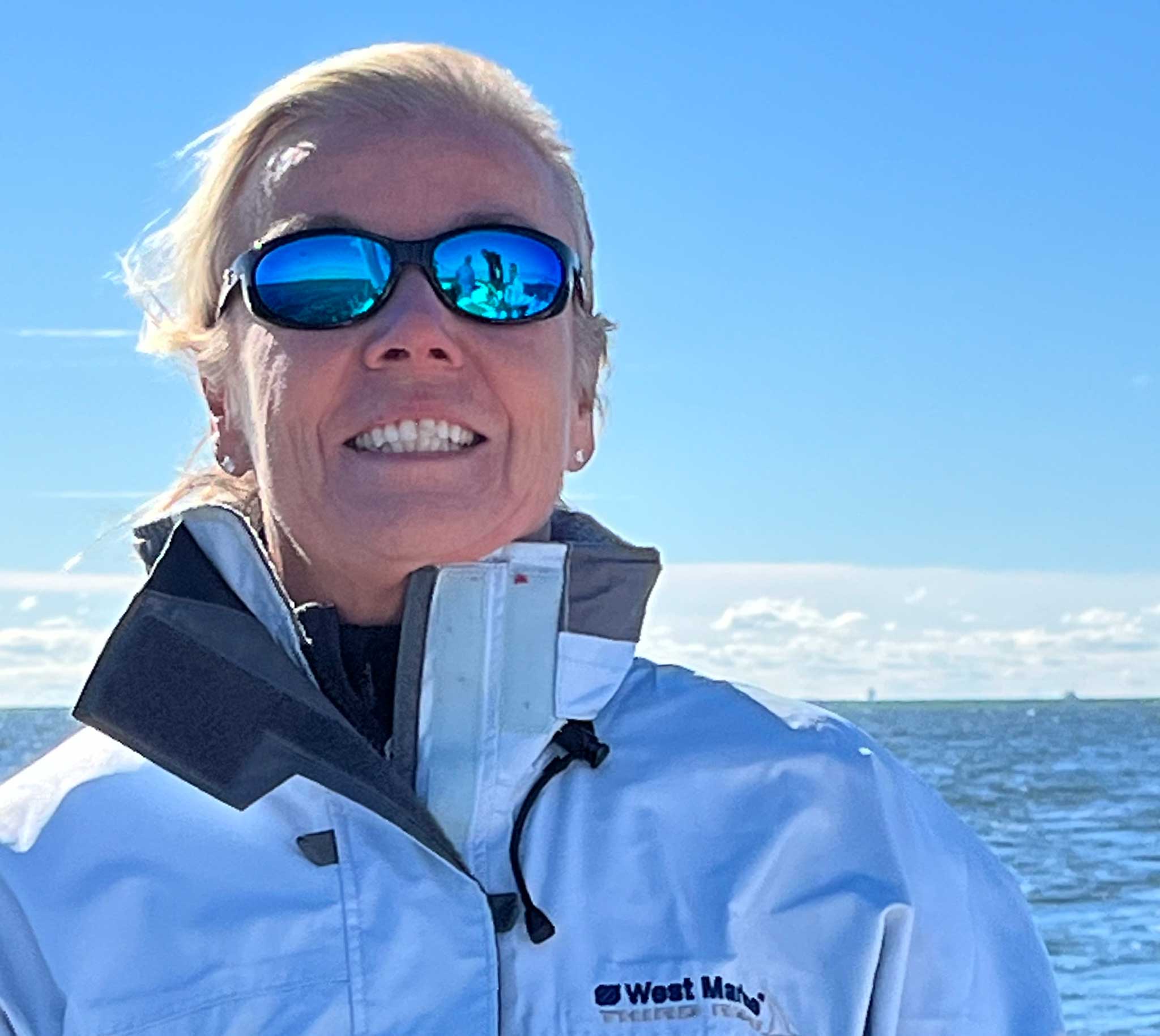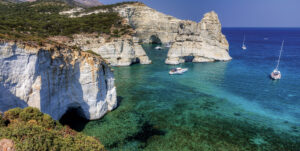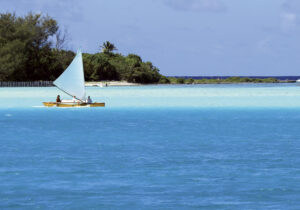I sucked in my gut as if that was going to skinny up our draft. A quick check of the chartplotter said we definitely were in the right place, but the coral heads reaching up from the bottom in the clear water below said otherwise. With the engines in neutral to protect the props, we drifted, tensely waiting for the breeze to push us into deeper water. When we cleared, the group exhale was audible.
“They weren’t kidding about Belize being shallow,” said Joe. “This’ll about give you a heart attack.”

I have a low tolerance for “Rudolph the Red-Nosed Reindeer” blasting through speakers in packed stores, so our Belize charter timing in November was a perfect pre-holiday escape. I booked a flight and applied for the Belize Port Authority Temporary Certificate of Competency, which every bareboat skipper here needs, because the waters are skinny, the charts are up for interpretation, and the safety of the reef that makes this place so spectacular is paramount.
We had chartered a Moorings 4500 catamaran at Laru Beya Marina on Placencia peninsula. The Moorings base here is large and impeccably run by Renee Brown and her husband, so everything was ready when we arrived. Having already watched an online video about the cruising grounds, I was provided more advice and warnings about the shallows—and with good reason.
Besides incredible blue waters and white beaches, a charter in Belize offers short hops between islands, so there’s lots of time off the boat and in the water. These islands are part of a 190-mile-long barrier reef running along this tiny country that’s tucked in between Mexico and Guatemala on the Caribbean side of Central America. In fact, the Belize Barrier Reef, a UNESCO World Heritage Site since 1996, is the second largest reef system in the world, after Australia’s Great Barrier Reef, and the largest reef in the northern and western hemispheres.

We didn’t spend any time in Belize City. Instead, we booked our flights through there and then used Tropic Air’s 30-minute puddle jumpers to get to Placencia and The Moorings base. These planes are small, so if flying and seeing your own fixed landing gear out the window tests your anxiety/nausea mettle, you may want to opt for a three-hour land shuttle ride down. On the other hand, the aerial views of the peninsula and the blue waters below are spectacular.
On the first afternoon, we set course south for an anchorage near Monkey River where we took a panga tour with an eagle-eyed guide pointing out birds, crocodiles, and howler monkeys. The monkeys weren’t into it that day and didn’t howl, but the mosquitoes knew an opportunity when they saw one. They don’t make bug spray strong enough for the wet season here, and our hike turned into a jog back to the river, where we breathed a sigh of relief as we wound along the lush wild banks that haven’t changed in over a century.
After the tour, we headed northeast to the main cruising grounds offshore from Placencia. I know I’ve hit a trip highlight when I buy the T-shirt, and Ray Cay was that for me. The waters north of the cay are a preserve, which means you can’t take your own dinghy in, so after lunch we hopped on a skiff with a driver and a snorkel guide.
In Belize, small local fishing boats stay offshore for days at a time, and only when their holds are full do they return. There can be three or more fishermen aboard each 30-footer, which is mostly filled with ice, so they sleep in hammocks strung on deck. The surrounding sea life recognizes these boats and gathers around, because as the fish are cleaned for transport, the rest goes in the water. Our guides anchored right next to one and we jumped in. It was like swimming in an aquarium with sharks, remoras, and rays circling and waiting for their next fish gut treat. At one point I literally ran face first into a 4-foot turtle as we both surfaced. I don’t know which of us was more surprised.

Ray Cay was only the beginning as we spent the week bumming around the isles of Belize. One night we anchored in the very protected Twin Cays, surrounded by mangroves. The water was as peaceful as a pond, but with crocodile warnings, there was no evening swim.
On one particularly stormy day, we threaded our way north to the Pelican Cays. It was a long, wet day as I sat at the helm, wrapped in a yellow rain poncho getting pummeled by huge raindrops. At least tropical rain is warm. We dropped the hook near Pelican Beach Restaurant and dinghied in to meet Dustin, his wife, Kim, and their teenaged daughter, Ama. They’ve set up a Robinson Crusoe eatery that’s also part of the homestead they built themselves. We traded sea stories over drinks, admired their off-the-grid setup, and even accessed some WiFi, which is always a treat on remote charters. It looked like both the best and worst place to be a teenager, and I was a bit envious of their remote lifestyle.

Our northern-most point was Coco Plum Cay from where we had a long leisurely sail south in the blissfully deep-water channel before returning the boat. The prevailing winds in these islands are easterly trades at 10-20 knots, but during November we had everything including northerlies, southerlies, and a couple of howlers up to 30 knots. Local weather forecasts are big-picture here—more of a suggestion than set rules—especially when fluky winds change directions and funnel between the cays. Although I had painstakingly planned an itinerary to maximize time under sail, I found it was a daily guessing game. One night at Ray Cay, the wind kicked up from the north and put us unexpectedly on a lee shore. I sat anchor watch, checking our mooring line and watching another cat drag anchor nearby. Each night was different from dead calm to calamity, so it kept us on our toes.
I had arranged a VRBO pre-charter stay at posh Placencia Pointe Townhomes, a cluster of two-story modern condos on their own beach, which required a comical one-minute pontoon shuttle to the main street. I think we could have hiked up our pants and walked it. The place was perfectly situated within minutes of the center of town where mornings started off at the Brewed Awakenings coffee shop.
Before and after your charter, accommodations in hotels, bed and breakfasts, and private homes in Placencia are available at all budgets from luxury digs in resorts like Naia or Francis Ford Coppola’s Turtle Inn, to very basic rooms over someone’s kitchen in the middle of town. The currency is the Belizean dollar which exchanges 2:1 with the U.S. dollar that’s also widely accepted. Cash is helpful with street vendors who don’t take credit cards, and the language is English with a dialect so strong, it made us strain to catch each syllable.
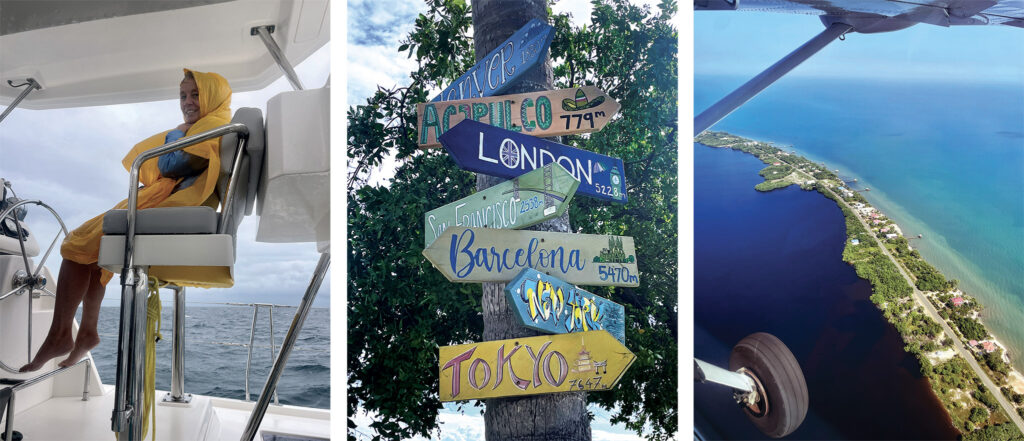
We made the good decision to have The Moorings base provision for us, which gave us more time to explore ashore as we took a few days before the charter for a land tour. I booked via Truly Wild Belize for a long drive to the Mayan ruins of Xunantunich plus cave tubing. Unfortunately, the rains had been heavy, and since Xunantunich is a long drive followed by a car ferry ride that wasn’t running due to high water, our driver diverted to Cahal Pech, a smaller ancient village where we were allowed to climb the pyramids and had the run of the place.
Local cave tubing is a hoot although you must first cross a fast-moving river while clinging to a line strung from trees across the water so you don’t wash away downstream. After a short hike, we arrived at the launch spot where our guide tied our tubes together, and like a long green centipede, we set off through the cave system alternately barreling ahead with the current or gently floating along. I wished the river would go on forever.
November is shoulder season, so we rarely saw another boat and had some breathing space before returning to the madness of the holidays. However, judging from the number of boats at The Moorings base, Belize cruising is popular and gets busy, so booking early is a good idea.
A week after we took off, we arrived back at the base, very smug that bumming around Belize didn’t turn into bumping around Belize. Our hulls were baby bottom smooth without even a paint scratch. And after the first few days of holding our breath over the shallows, we were well past the heart attack stage each time the depth sounder hit single digits, instead reveling in the beauty that is Belize.
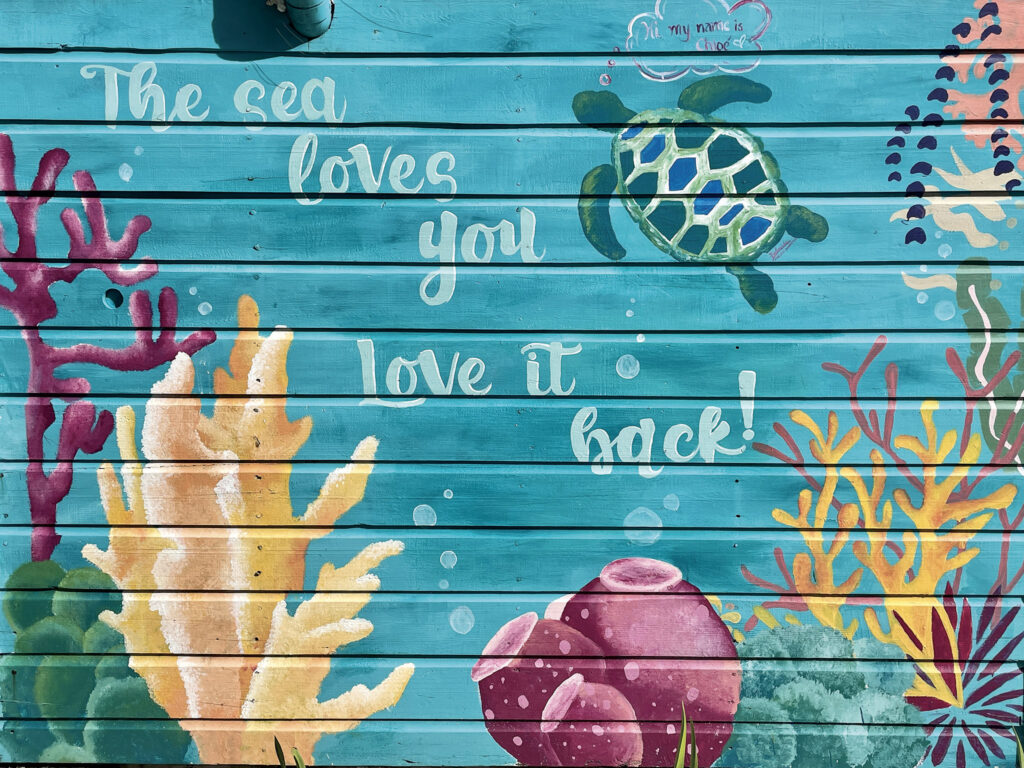
The Skinny on Bareboating Belize
The Moorings rates Belize as a Level 3 destination suitable for confident and experienced sailors. Conditions can include open water sailing, strong winds, and remote anchorages. At least 20 days or 400 miles as skipper on an equivalent size yacht is needed, and you’ll detail your experience in their mandatory online sailing CV. As a bareboat skipper, you must complete an online application to obtain a Temporary Certificate of Competency. You can do this yourself, although Renee Brown, The Moorings base manager in Placencia, says some of their skippers have not had success with the system and that it’s easiest to do this through the base.
“We have to submit an application to the Belize Port Authority along with a copy of any sailing tickets held by the charter skipper (or a comprehensive sailing résumé), plus a copy of the skipper’s passport and a color ID photo, along with a payment of US $12.50,” she says “It is then processed by Belize Port Authority and a Temporary Certificate of Competence is issued. This is valid for one month only, so start date is based on the date indicated on the application form as the start of the charter.”
Examples of acceptable certifications/experience include: US Sailing’s Bareboat Cruising Course or above; ASA’s 104 Bareboat Cruising Course or above; RYA Day Skipper Course or above; International Certificate of Competence (ICC) (prerequisites RYA Day Skipper Course or similar/equivalent certification from any recognized sailing school); and International Proficiency Certificate (IPC) (prerequisites ASA 104 or US Sailing Bareboat Cruising Course).
Additionally, you must watch the navigation video, which covers the entire chart briefing explaining the cruising grounds and restricted areas marked in red on a chart the base provides. Brown says staff will do additional chart briefings on request and are always willing to talk to charterers about their proposed float plan and make suggestions based on weather, updates from restaurants and resorts at the cays, and the like.

All this may sound intimidating, but The Moorings staff are very helpful and quite efficient at guiding you through the process. The key is to start early so you have time to acquire the required documentation and experience before diving into the certification process.
If you choose not to bareboat, The Moorings offers a fully crewed, all-inclusive option. They also can connect you with local skippers who can guide your charter.
“The local skipper option is necessary for anyone wanting to sail outside the barrier reef to the atolls (Lighthouse Reef with the Great Blue Hole, Turneffe atoll, and Glovers Atoll), and three of the marine reserves also require a local skipper or tour guide on board (Gladden Spit/Silk Cays Marine Reserve including the exquisite Queen Cays, Laughing Bird Cay World Heritage Site, and the Sapodilla Cayes Marine Reserve),” Brown says. “Our local skippers are personable and engaging, experienced at finding the best snorkeling or fishing sites, work with guests to coordinate rendezvous dives, and take the stress out of navigating our tricky waters.”
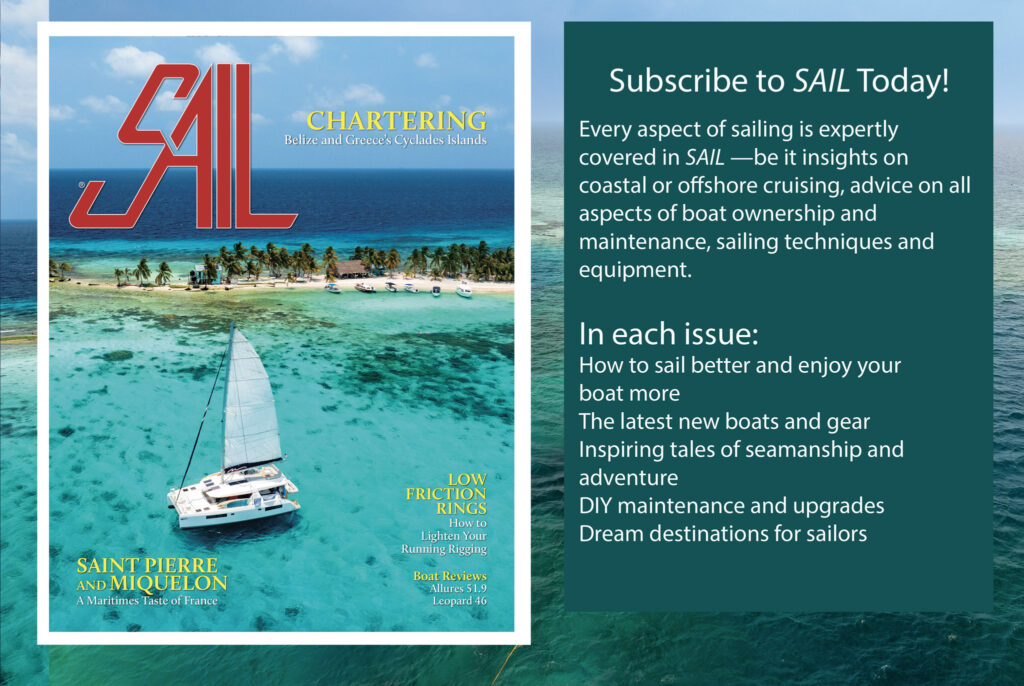
April 202
